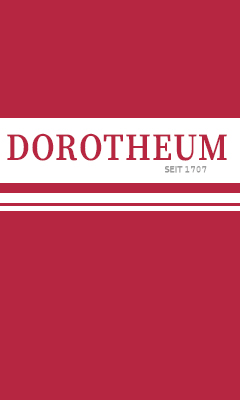Albert Order, Type I, Civil Division, II Class Commander
SKU: 01.SXK.0107.105.01
Estimated market value:

Estimated market value:
Attributes
Physical Description
A Latin cross, constructed of gold and enamel. On top of the 12 o’clock arm sits a mobile cut-out crown. The arms are enamelled in white with narrow golden edges. In between the arms is a circumferential oak leaf wreath in green enamel with golden edges and red enamelled fruits. The obverse centre medallion is enamelled in white and features the right-facing head of Duke Albert in gold, wearing a medieval-style cap. The medallion ring is enamelled in light blue with golden and smooth inner and outer borders. It features the golden inscription ‘ALBERTUS ANIMOSUS’ (‘Albert the Valiant’) with two arabesques with a star in between them at the bottom. The reverse is similar, except that the centre medallion features a crowned Saxon coat of arms in multi-coloured enamel, and the medallion ring features the same arabesques and star, but at the top, with the date ‘1850’ at the bottom. On a loop for suspension, on a green ribbon with white side stripes.
History
The Royal Saxon Order of Albrecht (Albert) was created on December 31, 1850 by King Frederick Augustus II of Saxony, in commemoration of the 350th anniversary of the death of his predecessor Duke Albert III, also known as Albert the Bold. It was awarded to those who remained loyal to the revolution of 1848 and at the Dresden May Uprising of 1849, and served the state well for civil virtue, science, and art.
The order was designed with Christian iconography in mind. The centre medallion was believed to be the bust of the founder of the Albertinian family line, Albert the Stout-hearted. However, it was, by mistake, Albert the Perennial, which resulted in the modelling to be changed in 1876.
At its conception, the order comprised five classes: Grand Cross, I Class Commander, II Class Commander, Knight, and Small Cross.
On March 18, 1858, the Small Cross was renamed the Honour Cross to improve the reputation of the class. In 1861, a gold and silver merit medal were added to the order.
In conjunction with the Austro-Prussian war, a merit cross with swords was added in 1866, and this was extended in December 1870 to have swords on ring. According to the statutes, those that were already in possession of an award without swords and were then awarded the swords, these were added to the ring below the crown. If a recipient of an award with swords was then awarded a higher class without swords, this higher class award would also features swords on ring.
Profound restructuring to the order occurred in 1876. The medals were abolished and the Knight was split into a I Class and II Class. In 1884, a gold Great Cross was added, and in June 1890, the Officer’s Cross was inserted into the order between the II Class Commander and the I Class Knight. Saxony was a pioneer in the German states for the integration of this class. More importantly, the bust was changed to feature the portrait of a young ruler with a hinged cap.
In 1893, it was decided that the Grand Cross could be awarded with a golden star. In July 1901, the Knight I Class with Crown was added as its own class between the Officer’s Cross and the Knight I Class.
In 1906, all Saxon orders began allowing swords on ring. Swords on ring were a sign for an award of bravery in a lower grade of the same order, however they often came at a cost paid by the recipient.
Until 1916, the orders were awarded as follows (with exceptions):
Grand Cross: Generals of the Inf.pp and Lieutenant Generals
Commander I Class: Major General
Commander II Class: Colonel
Officer’s Cross: Lieutenant Colonels
Knight I Class: Majors and Captains
Knight II Class: First Lieutenants, Lieutenants
Medal: NCOs and Enlisted Men
After 1916, the orders were awarded as follows (with exceptions):
Grand Cross with Gold Star: Generals of the Inf.pp in command
Grand Cross: Generals of the Inf.pp who do not command, and older Lieutenant Generals
Commander I Class: Young Lieutenant Generals and senior Major Generals
Commander II Class: Younger Major Generals, elderly Colonels
Officer’s Cross: Younger Colonels, Senior Lieutenant Colonels
Knight I Class with Crown: Senior Lieutenant Colonels
Knight I Class: Majors, Captains
Knight II Class: First Lieutenants, Lieutenants
“Older” officers were understood to be those who were at least two years in the relevant rank.
This order was the most commonly awarded order of Saxony. The Civil Division and Military Division should be equal in rank. Recipients of both a civil and military division decoration could wear both side by side.
The order became obsolete in 1918.
Manufacturers of the Type I decorations include Moritz Elimeyer, Gustav Adolph Scharffenberg, and Christian Friedrich Rothe. Manufacturers of the Type II decorations include Scharffenberg, Alfred Roesner, Glaser & Söhne, and Rothe. Godet was not an official supplier of the order, but was used as often as Rothe for specially made decorations.
The Type I awards are known as the "Baker Cap" Type and the Type II awards are known as the "Hinged Cap" or "Young Portrait" Type.
The I Class Commander and II Class Commander grades had the same size and composition, the main difference between the two grades was that the I Class Commander was awarded with a I Class Commander Breast Star.
The Grand Cross and the Commander are the same size. In the majority of cases, the Grand Cross has a stirrup eyelet, while the Commander has the ring eyelet, however different manufacturers had different protocols.
The II Class Commander was awarded 484 times.

Versions
$3,500 USD
Gold/Enamelled
Obv: ALBERTUS ANIMOSUS Rev: 1850
519 were awarded.


Comments
Sign in to comment and reply.


Scroll Top